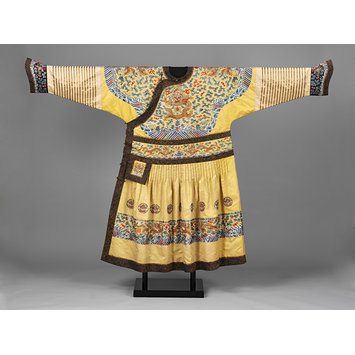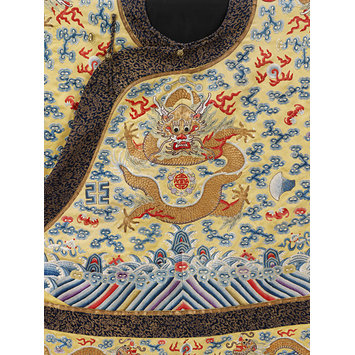V&A T.753-1950, Emperor's court robe, China (1875-1908)
Artifact Information
The robe is made of gauze-banded plain weave silk with embroidery. This robe is a woman's garment that may be the earliest non-ecclesiastical Chinese garment in the Museum. The grand is a rich red silk that has horizontal bands of fruiting pomegranates (symbolizing a woman with many kids) in gauze weave running across the fabric at widely spaced intervals. Over this, there is shiny embroidered decoration of fruits, flowers, birds and mythical beasts [1].
Victoria and Albert Museum, London, UK T.753-1950
Summary of results
Traditionally used Chinese dyes, pagoda tree buds and turmerichad been identified as the dyeing sources of this Chinese court robe [2]. The result is consistent with previous studies. Identification of a synthetic dye is also mentioned. The result agreed with the date of the robe, a late 19th century to early 20th century date. That was when synthetic dyes was imported and been used by dyers in China.
References
[1] https://collections.vam.ac.uk/item/O71648/emperors-court-robe-unknown/
[2] Jing Han, The Historical and chemical investigation of dyes in high status Chinese costume and textiles of the Ming and Qing Dynasties (1368-1911) PhD thesis, University of Glasgow February 2016.


